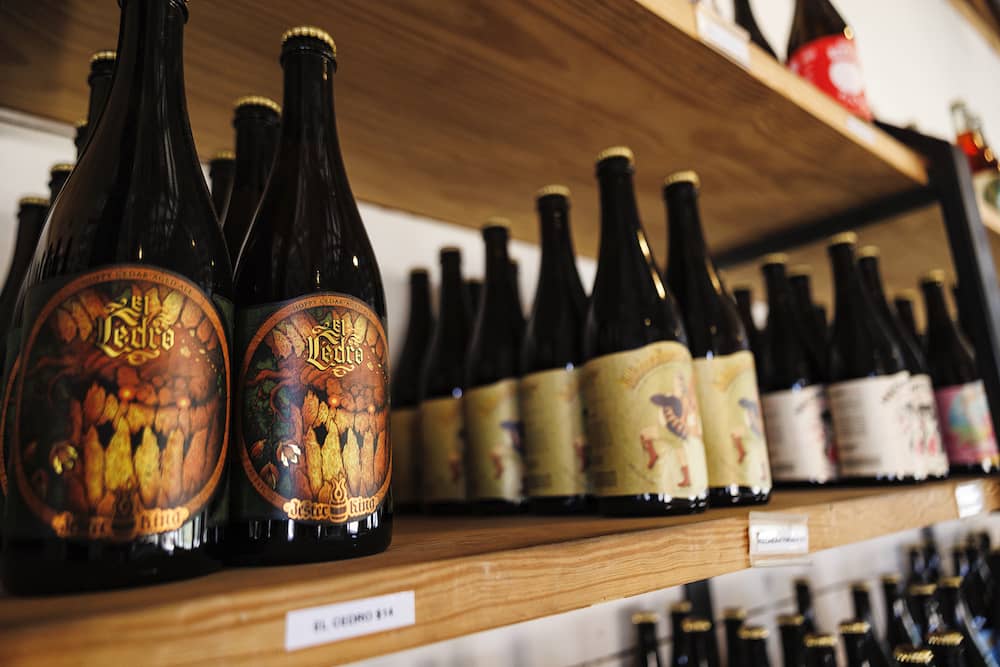Behind-the-Scenes at a Distillery in Galveston: Tours and Tastings
Behind-the-Scenes at a Distillery in Galveston: Tours and Tastings
Blog Article
Mastering the Craft of Purification: a Deep Dive Into Distillery Traditions
Exploring the intricate art of purification introduces a globe soaked in time-honored practices that have actually formed the spirits we enjoy today. From the old beginnings of purification strategies to the contemporary development of distillery devices, each action in the procedure brings with it a rich tapestry of background and experience. As we delve right into the fragile balance of contemporary versus traditional distilling methods and discover the relevance of essential components, a deeper understanding arises of the extensive impact distillery customs have on the spirits we relish.
Origins of Distillation Methods
The advancement of distillation strategies has a rich history that traces back to ancient people. The beginnings of purification can be connected to very early civilizations such as the Mesopotamians, Egyptians, and Greeks. These ancient societies used fundamental distillation techniques for perfumery, medication, and generating alcoholic drinks. The concept of separating components based on their different boiling points laid the foundation for the sophisticated purification procedures we have today.
The earliest proof of purification days back to around 3000 BC in Mesopotamia, where clay pots were utilized to distill perfumes and aromatic oils. The Egyptians further progressed these strategies, using distillation for embalming techniques and medical functions. The Greeks, significantly figures like Aristotle and Hippocrates, added to the theoretical understanding of purification.
Gradually, distillation spread to areas like India, China, and the Center East, each culture adding its one-of-a-kind touch to the craft. The development of distillation techniques proceeded with the Middle Ages and the Renaissance, eventually bring about the varied range of purification procedures utilized in modern distilleries worldwide.
Advancement of Distillery Devices

With innovations in innovation and a much deeper understanding of the purification process, modern distilleries now use a range of sophisticated devices to create spirits of the best. Today, purification devices includes column stills, reflux stills, and crossbreed stills, each developed to cater to details purification needs. These modern-day stills use much better temperature level guideline, enhanced distillation accuracy, and greater performance in separating alcohol from impurities.
In enhancement to stills, distilleries now make use of advanced condensers, fermenters, and filtration systems to additional refine the distillate. The development of distillery equipment remains to play a critical function in forming the diverse variety of spirits offered in the market today.
Typical Vs. Modern Distilling Practices
Alternatively, modern distilling techniques leverage cutting-edge innovation and innovation to streamline production procedures and enhance uniformity. Automated systems, computerized controls, and modern devices make it possible for contemporary distilleries to generate spirits more successfully and with greater precision.
While standard distilling techniques are valued for their heritage and the distinct tastes they produce, contemporary approaches use benefits in regards to scalability, quality assurance, and sustainability. By incorporating clinical improvements and modern-day design, distillers can optimize production, decrease waste, and satisfy the demands of today's market much more properly. Inevitably, the selection between conventional and modern-day distilling techniques often depends upon the distillery's goals, values, and target market.
Secret Components in Distillation Process
Within the craft of distillation, the selection of vital components plays an important role in determining the flavor account and quality of the spirits created. The key ingredients used in the purification process are generally water, yeast, and a fermentable source such as grains, fruits, or sugarcane.
Water is an essential part as it not only dilutes the alcohol material to look at this web-site a tasty level yet likewise influences the general mouthfeel and appearance of the spirit. The high quality and mineral material of the water made use of can considerably influence the end product.
Yeast is another necessary ingredient that transforms the sugars existing in the fermentable source right into alcohol via the process of fermentation. Different pressures of yeast can produce differing fragrances and flavors, adding to the one-of-a-kind qualities of the spirit.

Effect of Distillery Traditions on Spirits
The influence of historical distillery traditions on spirits prolongs beyond the choice of key components, forming the extremely significance and character of the last distilled products (Seawall Bar). These customs, gave through generations, play a critical function in specifying the distinct preference accounts and high qualities that identify one spirit from another
Distillery customs incorporate a wide variety of practices, from the certain strategies used in distillation to the selection old processes utilized. The usage of conventional copper pot stills in scotch manufacturing is thought to present certain flavors and attributes that are very valued by aficionados. The aging of spirits in oak barrels, a technique deeply rooted in distilling practices, adds to the development of complex aromas and flavors over time.

Conclusion
From the beginnings of purification methods to the contemporary methods, the effect of distillery customs on spirits is undeniable. Distillery traditions important site play a vital role in shaping the spirits sector and maintaining the heritage of purification methods.
Throughout the background of distillation, the equipment you can find out more used in distilleries has actually undertaken substantial advancement to boost effectiveness and high quality of the distillation process.With advancements in technology and a much deeper understanding of the purification process, modern distilleries currently make use of a selection of advanced devices to produce spirits of the highest quality. Today, purification devices includes column stills, reflux stills, and hybrid stills, each made to provide to certain distillation needs. From the beginnings of purification strategies to the contemporary practices, the influence of distillery practices on spirits is obvious. Distillery customs play an important duty in forming the spirits market and preserving the heritage of purification methods.
Report this page